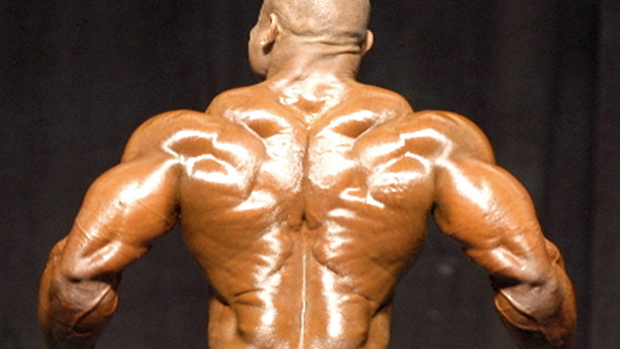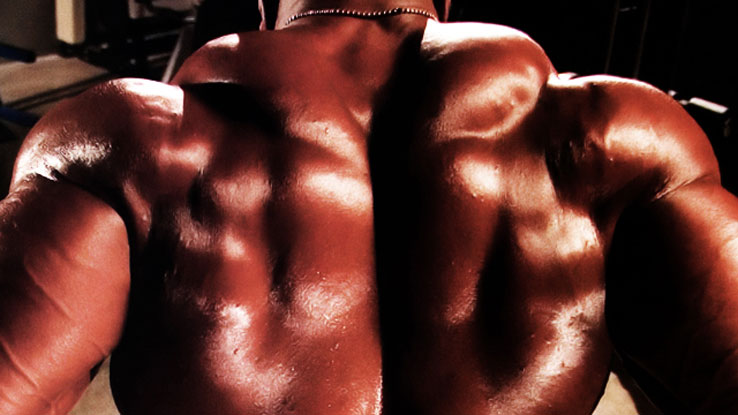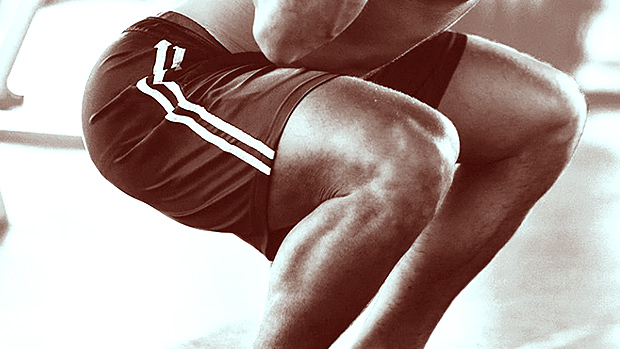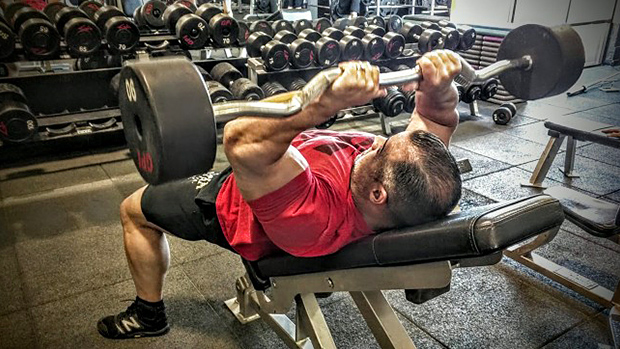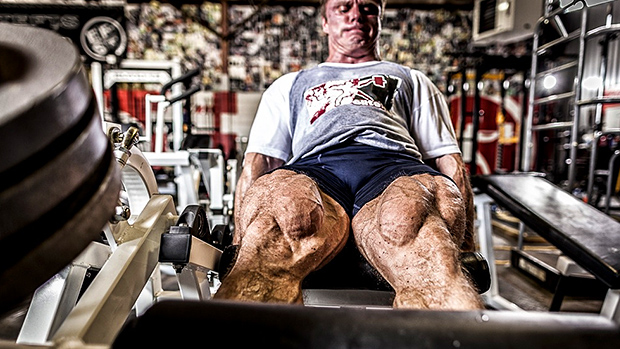Even though I have a home gym, it's nice to get out from time-to-time and actually train around other human beings. This typically leads to some entertaining moments. However, what I often see from the "educated and certified fitness trainers" is appalling.
Would you believe that many still assess their clients using sit-and-reach tests? Evidently, the myth of low back flexibility is still going strong. These are the same trainers giving their clients endless sets of back extensions in the hope of getting their back "strong."
And if that isn't enough, we have millions of women buying into the hype surrounding Yoga and Pilates. The idea that bending and contorting the spine is somehow going to make it stronger is beyond me.
Aside from just staying healthy for the hell of it, my goal has always been to get and keep you healthy so you can be freakishly strong in the gym or on the field. After all, what good is it to be injury-free and totally sedentary?
So, if our goal is a healthy back that performs at a high level in the weight room or on the field, where do we start? I don't care if your goal is to deadlift 1,000 pounds or to build a shredded Christmas tree that Mrs. Claus herself would give a second look, the principles are basically the same.
The Concept of Neutral Spine
In my years in the field, I've seen some really screwed up postures. I've seen people who are in so much anterior tilt that they can't pass any version of a leg-lowering test, and their glutes haven't functioned well since the Carter administration.
I've also seen people who have an ass flatter than the state of Indiana, with hamstrings so short that even the mildest stretch damn near has them in tears. The thought of lumbar flexion leads to a spontaneous disc herniation.
While they sit on opposite sides of the spectrum, these bodies share the same issues – they aren't in a neutral spine, and they have no clue how to get there.
In the spine, we have several natural curves:

The Lumbar Spine
You have five lumbar vertebrae, cleverly named L1, L2, L3, L4, and L5. These are your largest vertebrae, and collectively, they should exhibit a slight caving in (lordosis) when viewed from the side.
The Thoracic Spine
The thoracic spine is the longest section of your spinal column and is comprised of 12 vertebrae. Your thoracic spine should demonstrate a slight bowing out (kyphosis) when viewed from the side.
The Cervical Spine
Finally, you have seven cervical vertebrae. Much like the lumbar spine, your cervical spine should demonstrate a slight caving in (lordosis) when viewed from the side.
The issue with spinal alignment is that, quite often, we're nowhere close to "normal." This is usually due to imbalances around the hips, which I discussed in my article, Hips Don't Lie: Fixing Your Force Couples. If you aren't focused on the strategies I discussed there, that should be your starting point.
However, this article is focused on the spine, so let's discuss some ways to learn and reinforce a neutral spine in a simple environment.
You've all done planks/pillars before, no doubt. But are you doing them correctly?
Set-up in the plank position and place a dowel rod along your spine. Ideally, you have three points of contact: You glutes, your thoracic spine, and the top of your head. If you can't do this, you aren't in neutral from top to bottom.
Another option is birddogs. While this looks like a simple exercise, adding a dowel rod to the equation can make a profound difference.
Set-up in a quadruped position with the knees, underneath the hips and hands underneath the shoulders. Place a dowel rod length-wise along your spine. From there, make sure you are in neutral as above, and then drive through one heel, extending the leg back. Simultaneously flex the opposite arm/shoulder. Ideally you can keep the dowel rod in place throughout. This will not only test your ability to get into neutral, but your ability to stay there while producing movement.
Now that we've covered what neutral is and some ways to achieve it, let's examine what happens to your back (and your lifts!) if you aren't in neutral.
Also, the following section got out of order, and/or was removed as well – the article doesn't really make sense without it. The video clip that is currently second in the article should be first. Example below...
Now that we've seen what neutral is, and we've seen some ways to achieve it, let's examine what happens to your back (and your lifts) if you aren't in neutral.
Two Problems, One Solution
Scenario 1: You're in anterior tilt – too much lordosis.
You're psyched up for a big deadlift today. You've hit some solid weights in training and you're sure to smash your old PR by at least 20 pounds.
You set up in the bottom, and you get that big arch like always. As you start to pull, you probably won't have the upper hamstring and glute strength to make things happen. Too much arch will kill hip involvement.
As you pull, your body looks to use what's strong; your hips shoot up, the bar drifts forwards, and you're forced to use your quads and low back to finish the lift. Even if you manage to grind the lift up, it'll be a struggle to lock out because your glutes have little to no strength.
Scenario 2: You're in posterior tilt – too little lordosis or flat back.
You're an injury waiting to happen. The erectors are weaker than a kittens' meow, which makes holding an arch during a squat or deadlift virtually impossible.
Any lifter can tell you that losing your arch is a sure-fire way to lose strength, while a rigid, stable spine allows you to transfer maximal force through the hips and core into the floor, and through the upper back and hands into the bar.
Don't forget the fact that loaded lumbar flexion is one of the easiest ways to herniate a disc. Unless your goal is to finance your orthopod's new wing on their lakeside cottage, I'd highly suggest fixing this problem.
The lesson is this: Neutral spine is important in a static posture assessment, but it's more important in everyday life, and even more important in lifting. Whether your goal is to lift heavy shit or to build a back of epic proportions, certain strategies must be implemented.
Mobility: The Foundation of Back Building
We know that there's almost zero correlation between low back flexibility and low back health, so where should we be getting the necessary mobility? The answer's simple: The joints above and below; specifically, the hips and thoracic spine.
The Hippest Joint in Town
The hip joint is amazing in the amount of freedom of movement it possesses. Think about all the things you can do with your hips alone:
• Flexion and extension
• Abduction and adduction
• Internal and external rotation
We lose hip mobility as a result of several things we do on a consistent basis. Too much sitting; failure to correctly execute static stretches and mobility drills; and leg training in the gym which can lead to a stiffening of the hips, creating a stiffness imbalance between the hips and lumbar spine.
To counteract this, we need to do the opposite of what our intuition tell us. In the case of our hips, here are some simple guidelines.
#1) If you sit for long periods of time, figure out ways to get out of the hips flexed position. If you have some extra coin, purchase a stand-up desk. At the very least, consider investing in an Airex pad and doing lunge stretch variations throughout the day.
#2) Most chairs put us in a flexed spine position, which increases the pressure on our discs. To alleviate this, make your own towel roll. Take a towel, roll it up, and place three rubber bands around it to keep it in place. Use this behind the low back any time you sit for an extended period of time (at work, during commutes, etc.).
#3) Take a good, hard look at the technical execution of your lifts to determine if you need a change in programming. Quite often, people can't assume a neutral spine/slight lordosis in the bottom of a squat or deadlift.
If this is you, you're not only losing precious pounds on the bar, but you're setting yourself up for a slow-but-imminent injury. I'll usually have people switch to front squats or rack pulls until their hip mobility comes around and they can execute the lifts safely through the desired range of motion.
To correct this, focus on a ton of core stability work and consider shortening your range of motion (ROM) on specific exercises until you can assume the appropriate postures.
#4) When you're doing a static stretch or mobility drill for the hips, you must stay in neutral spine! The human body will always follow the path of least resistance, so if you have more stiffness in your back than in your hips, your body will always move via your back first, unless you tell it otherwise.
#5) If you're performing a hamstring or adductor stretch, focus on staying tall and maintaining a neutral spine. Also, don't get confused into worrying about how much ROM you "should" have. If you're doing it correctly, you're not going to move as far as you normally could.
The beautiful thing about reinforcing good mobility is that your movements will not only be smoother and more efficient, but you'll be able to unlock and utilize the big muscles of the hips and thighs when you lift. Using these muscles better will mean more weight moved, more muscle built, the whole nine yards.
The Appropriately-Named T-Spine
Much like the hips, our thoracic spine is often in terrible alignment and lacks any significant mobility. This is true for several reasons.
We spend far too many hours in a flexed-forward, seated posture. This prolonged exposure leads to soft-tissue creep and an adaptive shortening of our tissues. Just like your body gets stronger from lifting weights, your body can become more "efficient" at retaining the specific postures you assume throughout the day.
Unbalanced training is another major contributor. Monstrous 30-set workouts including the flat and incline bench press, decline dumbbell press, and cable and dumbbell flies really aren't necessary.
In fact, improving your t-spine alignment would do much more to improve the look of your chesticles than all the needless pumping and cramping you're currently doing.
We have a much greater capacity for rotation in our thoracic spine (7-9 degrees per segment) when compared to our lumbar spine (0-2 degrees per segment). Yet, many noted fitness and sporting professionals still espouse the need for rotation from the lumbar spine.
So how do we deal with these issues? Just like with our hips, doing the opposite will go a long way to optimizing alignment and movement patterns.
Solution #1) When sitting, constantly fidget and re-adjust your posture. It may help to think about pushing your chest out, like you were at the beach. If you can't remember, set a reminder in your Outlook to go off every 15 minutes: "Your posture sucks. Fix it now!"
Solution #2) Stop assuming that you're balanced; chances are, you're not. Even if you are, it would be a good idea to prioritize mid-back strength for a while. You'd be surprised what difference a heavy dose of scapular prehab, and horizontal and vertical pulling can make to someone's posture and alignment.
Solution #3) Whether you're warming up, training, or performing your sport, focus on getting your spinal rotation from the upper back and hips, rather than the lumbar spine. The low back should be stabilized whenever possible. Noted spinal biomechanist Stuart McGill calls this "sparing the spine."
Continuing Your Education
If you're still reading up to this point, chances are that you realize the importance of overall core stability. I've written two articles that cover this thoroughly: Core Training for Smart Folks and High Performance Core Training.
And if, somehow, you're still confused as to why either of these are important, re-read Mike Boyle's article A Joint-by-Joint Approach to Training.
Final Thoughts
By now, you should've learned (at least) two things. How a healthy back helps you lift heavy things with maximal efficiency and ease, and how it helps you lift heavy things for a long time without pain or discomfort. Hopefully you'll take this advice to heart. Your body, your lifts, and your performance in and outside the gym will thank you.

